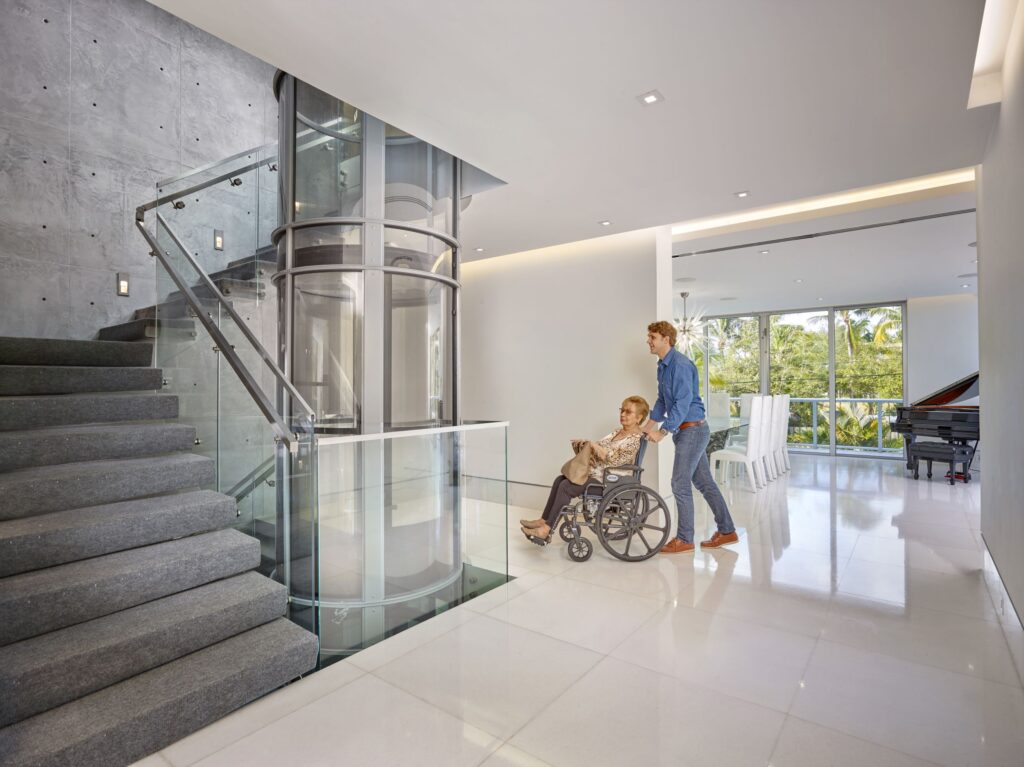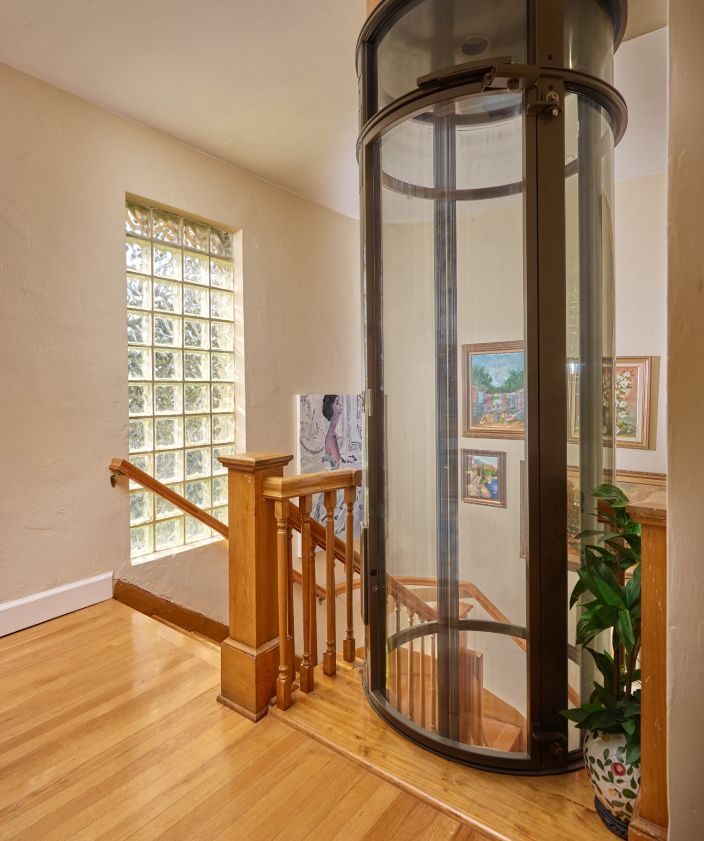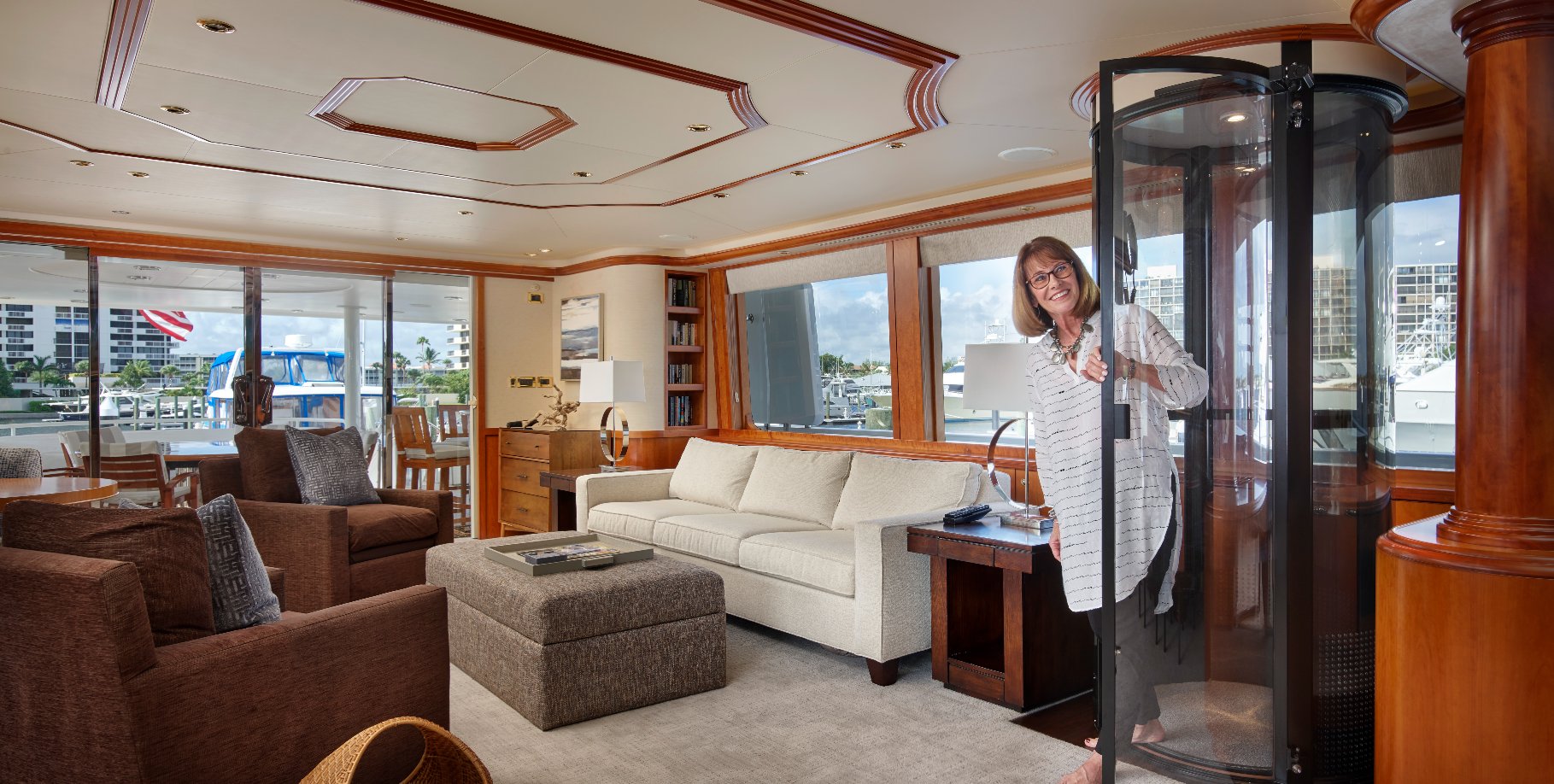In the realm of home design and accessibility, elevators are increasingly becoming a sought-after feature. Whether for convenience, mobility, or future-proofing a property, installing a home elevator involves careful consideration of dimensions, load capacity, and compliance with regulations. Understanding these aspects is crucial for homeowners embarking on elevator installations or renovations.
Exploring Standard Elevator Dimensions
Before diving into the intricacies of elevator dimensions, it’s essential to grasp the standard sizes and configurations available. Unlike their residential counterparts, residential elevators typically boast more modest dimensions to accommodate the limited space within homes.
Typical Elevator Dimensions in Feet
Residential elevators, unlike their larger residential counterparts, usually don’t exceed 15 square feet in cab size. Generally, they measure 36 inches (3 feet) wide and 48 inches (4 feet) deep. However, homeowners have the flexibility to opt for larger cab sizes if space permits.
Elevator Size Considerations
Accessibility considerations have driven the evolution of elevator size standards. Meeting wheelchair and stretcher access requirements necessitates careful selection, especially concerning elevator door configurations.
ADAAG Residential Elevator Size Requirements and Regulations
Elevator models compliant with ADAAG regulations offer various floor sizes and interior cab heights, catering to diverse accessibility needs. Door width and height can also be tailored to suit specific requirements.
Typical Elevator Shaft Dimensions in Feet
Residential elevators can fit within shaft dimensions ranging from 5 feet by 4 feet to 5 feet by 7 feet, with an average shaft length of 50 feet. While most homes comfortably accommodate elevators with three to four stops, taller structures may necessitate larger machines.
Introducing the Perfect Elevator Dimensions: Pneumatic Vacuum Elevators
Pneumatic Vacuum Elevators (PVE) presents a lineup of innovative elevator solutions tailored to meet diverse needs while adhering to precise dimensions for optimal performance and functionality.
Vacuum Elevator PVE30

- Exterior Diameter: 750 mm
- Capacity: Single passenger (159 kg)
The PVE30 offers a compact yet efficient solution for vertical transportation. With its sleek design and precise dimensions, it seamlessly integrates into various spaces, providing convenient access for single passengers while maintaining a focus on efficiency and reliability.
Vacuum Elevator PVE37

- Exterior Diameter: 933 mm
- Capacity: Two passengers (205 kg)
The PVE37 combines increased capacity with a refined exterior diameter, catering to the needs of businesses and residential spaces requiring the transportation of multiple passengers. Its optimal dimensions ensure smooth operation while accommodating enhanced passenger volume.
Vacuum Elevator PVE52

- Exterior Diameter: 1316 mm
- Capacity: Three passengers / Wheelchair accessible (238 kg)
The PVE52 stands out as a versatile elevator solution, offering ample space for multiple passengers or wheelchair accessibility. With its expanded dimensions, it provides enhanced functionality without compromising on efficiency or safety.
Elevating Vertical Mobility with PVE
Pneumatic Vacuum Elevators exemplifies innovation and precision in elevator design. Each model, meticulously crafted to meet specific requirements, reflects a commitment to excellence and optimal performance.
Key Features:
- Sleek Design: PVE elevators boast sleek and modern designs, seamlessly blending into various architectural styles.
- Efficient Performance: With precise dimensions and advanced technology, PVE elevators ensure efficient and reliable vertical transportation.
- Accessibility: From single passengers to wheelchair users, PVE elevators prioritize accessibility, offering inclusive solutions for diverse needs.
- Customization: PVE elevators can be tailored to suit specific requirements, ensuring a personalized experience for every user.
Frequently Asked Questions
What is the standard size of an elevator?
Most elevators measure 6.5 to 7 feet wide and 6 feet deep, although pneumatic elevators feature distinct dimensions, averaging 43 inches in diameter.
How many people fit in an elevator?
While the average elevator can accommodate four to five people, residential elevators are typically designed for one or two passengers, considering their compact dimensions.
How much space is needed for an elevator?
Approximately 20 square feet or less is required for a home elevator, with shaft space typically occupying around 5 square feet.
Is an elevator required in a two-story building?
Elevators are generally not mandated in buildings with fewer than three stories, although local building codes may vary.
How much do different elevator sizes cost?
For precise pricing details, homeowners are encouraged to request a free quote, allowing for tailored solutions based on specific needs and preferences.
What is the standard size of a residential elevator?
The standard size of a residential elevator typically ranges from 36 inches (3 feet) wide and 48 inches (4 feet) deep. However, dimensions may vary based on specific models and customization options.
What is the minimum size for a residential lift?
The minimum size for a residential lift generally depends on accessibility and safety standards. Elevators must have adequate space to accommodate passengers comfortably while adhering to regulatory requirements.
What size is a 4-person elevator?
A 4-person elevator typically ranges in size, but a common dimension could be around 48 inches wide by 60 inches deep. This allows sufficient space to comfortably accommodate four passengers or a wheelchair and attendant.
What size should an elevator be?
The ideal size of an elevator depends on factors such as the intended usage, building layout, and passenger requirements. Elevators should be spacious enough to ensure comfort and safety for occupants while adhering to building codes and accessibility standards.
Which type of elevator is best for home?
The best type of elevator for a home depends on various factors, including space availability, budget, and personal preferences. Common options include hydraulic, traction, and pneumatic vacuum elevators, each offering unique benefits and dimensions suited to different residential settings.
What is the size of a single elevator?
A single elevator typically ranges from 36 inches to 48 inches wide and 48 inches to 60 inches deep, depending on the model and manufacturer. These dimensions provide ample space for single passengers or limited mobility devices.
How big is a 2-person elevator?
A 2-person elevator typically measures around 36 inches wide by 48 inches deep, providing sufficient space for two passengers to stand comfortably side by side.
What size is a hotel elevator?
Hotel elevators vary in size depending on factors such as building layout, traffic volume, and architectural design. They can range from compact designs suitable for small hotels to larger elevators capable of accommodating multiple guests and luggage.
Are residential elevators customizable in size?
Yes, many residential elevators offer customization options, allowing homeowners to tailor the dimensions to suit their specific needs and the available space within their homes.
What are the typical door dimensions for residential elevators?
The typical door dimensions for residential elevators usually range from 36 to 42 inches in width, providing sufficient clearance for easy entry and exit.
Can residential elevators accommodate wheelchairs?
Yes, many residential elevators are designed to accommodate wheelchairs, featuring wider door openings and spacious interiors to ensure accessibility for individuals with mobility challenges.
Are there specific building codes for residential elevator dimensions?
Yes, building codes dictate certain standards and regulations for residential elevator dimensions to ensure safety, accessibility, and compliance with local building regulations. It’s important to consult with professionals familiar with building codes when planning residential elevator installations.
Can residential elevators be installed in existing homes?
Yes, residential elevators can be installed in existing homes, but the feasibility depends on factors such as available space, structural considerations, and accessibility requirements. Professional evaluation and customization may be necessary to retrofit homes for elevator installations.
How do I determine the number of stops needed for a residential elevator?
The number of stops needed for a residential elevator depends on the layout and design of the home, including the number of floors or levels that require elevator access. Most residential elevators make between three to four stops, but customization options are available for homes with unique requirements.
What are the ADA requirements for residential elevators?
The Americans with Disabilities Act (ADA) sets guidelines for accessibility standards, including requirements for residential elevators to accommodate individuals with disabilities. Elevators should have sufficient space, clearances, and controls to ensure accessibility and usability for people with disabilities.
Elevate Your Residential Spaces with Pneumatic Vacuum Elevators
In the bustling world of commerce, vertical transportation is paramount. Pneumatic Vacuum Elevators (PVE) offer a range of residential elevator options, including passenger elevators, wheelchair lifts, and more.
Trusted Designs, Optimal Performance
PVE’s residential elevators boast trusted designs and guaranteed performance, ensuring seamless vertical mobility for your business.
Passenger Elevators: Effortless Transportation
Efficiently transport people and goods with PVE’s passenger elevators, designed for diverse residential applications.
LULA Elevators: Enhanced Accessibility
Enhance accessibility in your space with PVE’s LULA elevators, ideal for settings with limited use or application.
Experience reliability, space efficiency, and customization with Pneumatic Vacuum Elevators.








